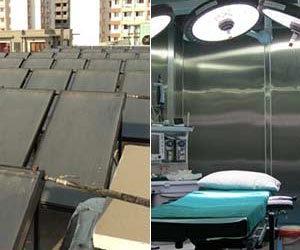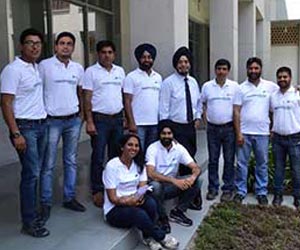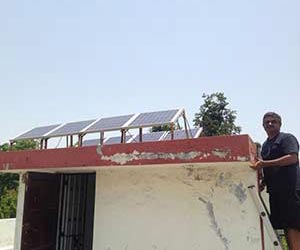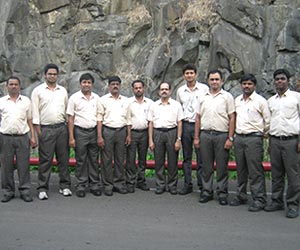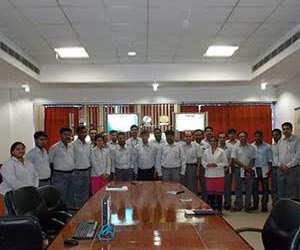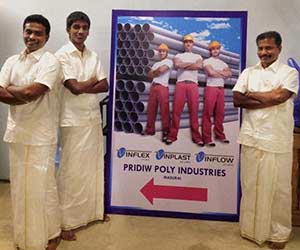Key Recommendations Proposed During the NDTV-GRUNDFOS Mission Energy Sessions World Environment Day 2014
NDTV and Grundfos Pumps India Pvt Ltd (Grundfos India) turned the spotlight on the looming energy crisis this World Environment Day with The Mission Energy Sessions – a platform for prominent energy experts, policy makers and industry leaders to highlight issues; recommend solutions for industry and the new government; and focus on energy efficient ideas for the future.
With an objective to focus on sectors that contribute to significant energy consumption and thereby offer potential for optimization, experts from leading think tanks as well as industry, transport and building sectors were invited for deliberations.
Our esteemed panellists included
• Mr N K Ranganath, Managing Director – Grundfos Pumps India
• Dr. Ajay Mathur, Director General- Bureau of Energy Efficiency
• Mr Saurabh Kumar, Managing Director – Energy Efficiency Services Ltd (EESL)
• Ms Naina Lal Kidwai, Executive Director & Country Head – HSBC and Former President – FICCI
• Ms Mili Majumdar, Director, Sustainable Habitat Division – TERI
• Mr Chandra Bhushan, Deputy Director General – Centre for Science and Environment (CSE)
• Mr Krishan Dhawan, Chief Executive Officer – Shakti Sustainable Energy Foundation, India
• Dr. Prem Jain, Chairman IGBC
• Ms Beroz Gazdar, Head Sustainability – Mahindra and Mahindra
• Mr Jørgen Bjelskou, Group Public Affairs Director – Grundfos
We would like to collate the key recommendations proposed for your kind consideration
a) Supply side efficiencies:
1. Smart grids: Mainstream smart grids for reducing dependence on grid electricity and scale up ongoing pilot projects. Promote distributed, decentralized generation of electricity, including wind and solar to enhance access.
2. Smart cities: Design and plan cities in an integrated manner so that transport and infrastructure issues can be addressed and public transport becomes the norm.
3. Transport: Fuel efficiency standards for vehicles are required. A million-bus programme could be proposed to enhance public transport.
b) Demand side responses:
1. Energy pricing: Subsidies to be restructured such that the right price of energy includes options such as wind/solar that are less polluting but prima facie appear to have high costs. Public costs for polluting sources of energy such as coal to be incorporated in energy pricing. Access and affordability to be considered as well therefore, subsidies need to be targeted.
Energy consumption and power subsidies in agricultural sector to be reviewed. They are currently accountable for a significant amount of fiscal deficit at the Centre and State levels or losses in the discounts. Energy efficiency in this sector (including power for pumping ground water) offers a huge opportunity for the government and businesses to conserve energy. Reducing consumption can help reduce subsidies and encourage business to invest. The first step towards making it energy efficient is to first measure the energy consumption, and ensuring all connections are metered, even where power is free or subsidized.
Monetize energy efficiency: With a focus on demand side energy management through policy and institutional mechanisms, financing of energy efficiency and attractiveness for investments to be ensured. The business model for energy efficiency to be strengthened by giving targets to distribution companies to reduce consumption by enhancing efficiency and reduce T&D losses. Electricity distribution companies to start promoting demand side management. Just as they sell electricity, they should pay for / incentivize saving electricity as well.
ESCO model of financing to be followed for enhancing efficiency in existing buildings. Measurement and verification protocols for existing buildings (without escalating costs) to be put in place.
2. Using the Green Building rating framework like LEED, IGBC, GRIHA to achieve demand side energy optimization, integration of renewable energy, on site implementation of various relevant policies and regular monitoring. Enforcement of Energy Conservation Building Code (ECBC) for commercial buildings and integrated building design to be made mandatory by all States. A cadre of building energy and Green Building Accredited professionals to sign off on building designs before submission to relevant authorities and also after completion of buildings.
3. Appliances: Set minimum standards of efficiency for all electrical appliances including motors (example: only premium efficiency motors to be used from 2016 onwards). A higher depreciation for energy efficient equipment and not just for renewable energy equipment and a lower excise duty will encourage energy efficiency. A quick overhaul of the BIS standards for electrical equipment and full backing to BEE to ensure energy labeling of all powered equipment. Promote innovations for doubling the efficiency of air conditioners in the next ten years. Ensure minimum standards for motor and pumps are higher than the current BIS standards.
4. Life Cycle costs: Government being a major consumer of power, the projects being tendered by the Govt. should be based on life cycle costs and not just the initial cost. Energy efficiency (running costs) should be factored in.
Education and awareness about efficient technologies (for buildings, automobiles etc) and sustainable lifestyles for changing mindsets through experiences (for example all educational campuses as green buildings) and curriculum (introduction of relevant modules at various levels of formal education) needs to be encouraged. Effective skilling needs to be ensured. Companies need to demand not only green power, but also green products which shall enhance supply of green products and ensure sustainable development.
Promoting innovations in technologies, operating practices, financing and innovation in business models. Create challenge programmes to come up with super-efficient technologies that can be adopted. Collaborations in the supply chain and SMEs and large industries to be further encouraged. Too many bank managers are unconfortable with assessing the risks of financing energy efficiency, which needs to be addressed.
Political commitment and leadership go hand-in-hand with innovation. Investors and solution providers need a long-term policy framework – with ambitious targets for energy efficiency – to invest in new technologies and solutions. The more ambitious the energy efficiency targets and concrete energy regulation, the more innovation in the private sector. To get the ball rolling, we propose a close dialog between policy-makers and industry on gradually strengthening the energy efficiency requirements in India.




